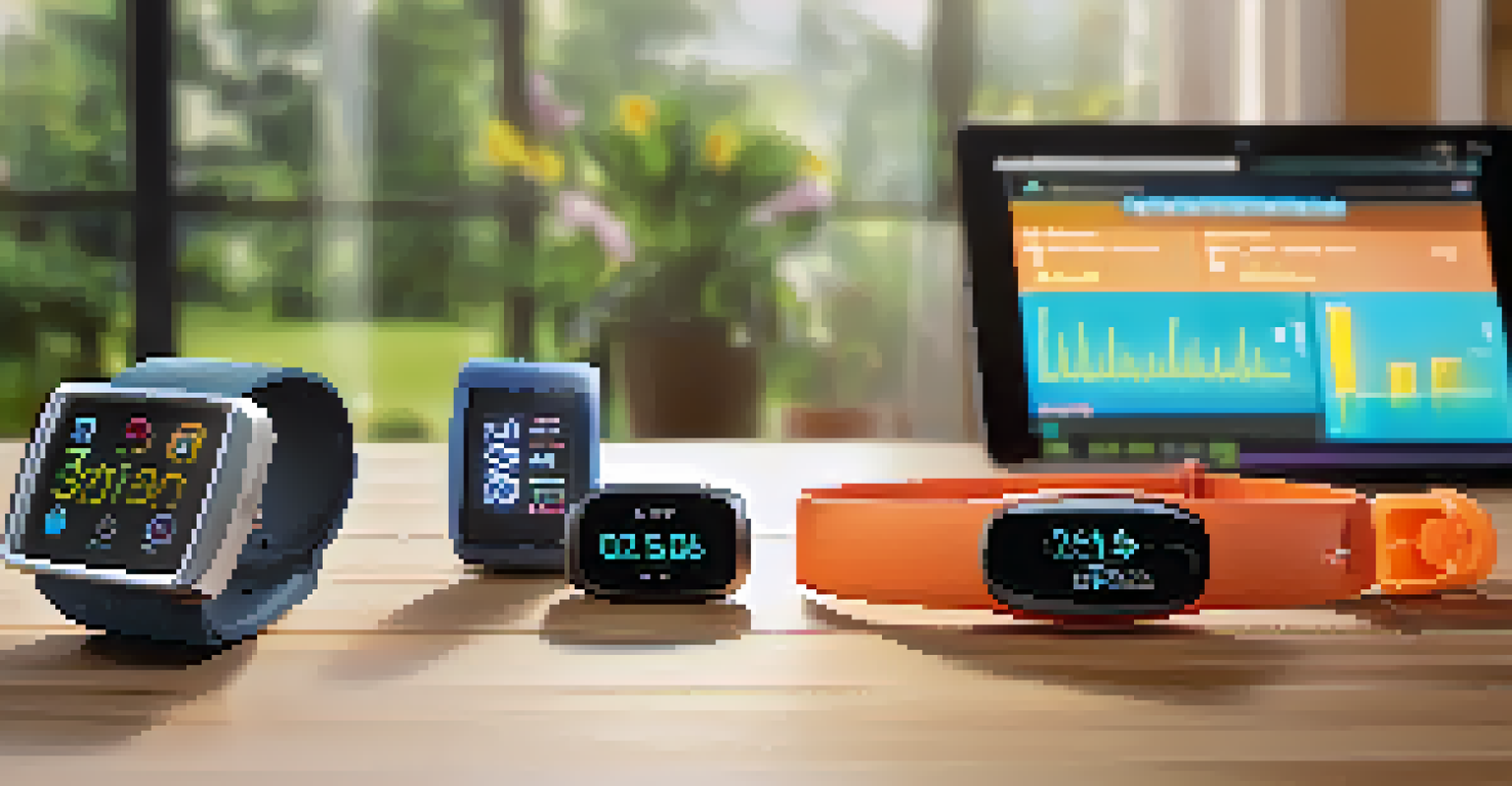Telemedicine Technology: Key Innovations Driving Healthcare Forward

Understanding Telemedicine and Its Importance in Healthcare
Telemedicine refers to the use of technology to provide medical services remotely. This means patients can consult healthcare professionals without the need to travel, which is especially vital in today's fast-paced world. For many, it offers a lifeline, eliminating barriers such as distance and time constraints.
Telemedicine is a powerful tool that allows us to provide care where it's needed, when it's needed, and how it's needed.
The importance of telemedicine has surged, particularly during the COVID-19 pandemic, where in-person visits posed risks. It ensured that patients still received essential care while minimizing exposure to the virus. As a result, we saw a dramatic influx of telehealth services, highlighting the need for accessible healthcare solutions.
Moreover, telemedicine isn't just a temporary solution; it represents a significant shift in how we approach healthcare. It empowers patients, giving them more control over their health journeys, while also easing pressures on healthcare facilities. With ongoing innovations, telemedicine is here to stay.
Key Innovations in Telemedicine Technology
Several innovations are driving the telemedicine revolution, with mobile health (mHealth) apps leading the charge. These applications allow users to schedule appointments, track health metrics, and even receive reminders for medication. This convenience is reshaping how patients engage with their healthcare providers.

Video conferencing technology has also seen significant advancements, making virtual consultations more interactive and effective. High-definition video and secure connections facilitate real-time communication, allowing doctors to assess patients' conditions as if they were in the same room. This enhances the overall patient experience and fosters trust.
Telemedicine Enhances Healthcare Access
Telemedicine breaks geographical barriers, allowing patients, especially in rural areas, to access specialists without the need for travel.
Additionally, wearable devices like smartwatches are becoming integral to telemedicine. They can monitor vital signs and transmit data to healthcare providers, enabling proactive health management. This seamless integration of technology ensures that patients receive timely interventions based on real-time data.
Artificial Intelligence: Enhancing Telemedicine Services
Artificial Intelligence (AI) is revolutionizing telemedicine by streamlining processes and improving diagnostics. For instance, AI algorithms can analyze patient data to identify potential health risks even before symptoms appear. This proactive approach allows for early interventions, which can be crucial in managing chronic conditions.
The future of healthcare is not just about treating illness, but about creating a system that empowers patients to take charge of their health.
Moreover, AI chatbots are increasingly used for initial consultations, providing patients with immediate answers to their questions. These bots can triage symptoms and guide users on whether they need to see a healthcare professional. This not only saves time for both patients and doctors but also enhances the efficiency of healthcare systems.
As AI continues to evolve, its applications in telemedicine will only expand, offering more personalized and efficient care. By harnessing AI, healthcare providers can better understand patient needs, ultimately leading to improved health outcomes and patient satisfaction.
Data Security in Telemedicine: A Growing Concern
While telemedicine offers numerous benefits, it also raises significant concerns regarding data security and patient privacy. With sensitive health information being transmitted online, safeguarding this data is paramount. Healthcare providers must implement robust security measures to protect against breaches and unauthorized access.
The use of encrypted communication channels is one effective way to mitigate risks. Additionally, strict compliance with regulations like the Health Insurance Portability and Accountability Act (HIPAA) ensures that patient information remains confidential. Patients should also be educated about safe practices when using telemedicine services.
AI Revolutionizes Patient Care
Artificial Intelligence streamlines telemedicine processes, enabling early interventions and efficient triage through chatbots.
As technology continues to advance, the conversation around data security in telemedicine will only intensify. Ensuring a secure environment will build trust among patients and encourage the continued use of telehealth services.
The Role of Telemedicine in Rural Healthcare Access
Telemedicine plays a crucial role in improving healthcare access for rural communities. Many rural areas face a shortage of healthcare professionals, making it difficult for residents to receive timely care. Telemedicine bridges this gap, allowing patients to connect with specialists from the comfort of their homes.
For example, a patient in a remote village can consult with a cardiologist located in a major city without the need to travel long distances. This not only saves time and money but also ensures that patients receive the care they need promptly. It’s about breaking down geographical barriers and making healthcare accessible to everyone.
The ongoing development of telemedicine technologies will further enhance these opportunities, ensuring that no one is left behind in the quest for quality healthcare. As we continue to innovate, we can look forward to a future where healthcare is truly accessible to all.
Patient Engagement and Telemedicine: A New Era
Telemedicine is transforming how patients engage with their healthcare journeys. Traditional models often left patients feeling like passive recipients of care, but telemedicine encourages active participation. With easy access to information and care, patients are more empowered to take charge of their health.
For instance, many telehealth platforms offer educational resources and tools for self-management. This empowers patients to understand their conditions better and make informed decisions regarding their treatment. When patients feel informed and involved, they are more likely to adhere to medical advice and treatment plans.
Data Security is Crucial in Telehealth
As telemedicine grows, ensuring data security and patient privacy becomes essential to build trust and encourage continued use.
As engagement rises, so does the overall quality of care. Healthcare providers who encourage patient involvement through telemedicine foster stronger relationships and build trust. This new era of healthcare is about collaboration, where both patients and providers work together toward better health outcomes.
Future Trends in Telemedicine Technology
Looking ahead, the future of telemedicine technology is bright, with several exciting trends on the horizon. One significant trend is the integration of augmented reality (AR) and virtual reality (VR) into telehealth. These technologies can enhance remote consultations, allowing doctors to visualize complex conditions in real-time.
Another promising trend is the expansion of telemedicine into mental health services. As the stigma surrounding mental health continues to diminish, more people are seeking remote therapy and counseling services. Telemedicine provides a safe and comfortable environment for individuals to discuss their concerns with professionals.

Lastly, the continuous evolution of technology will likely lead to more personalized healthcare experiences. Advanced analytics and machine learning will enable providers to tailor treatments based on individual patient data. As we embrace these trends, telemedicine will play an increasingly vital role in shaping the future of healthcare.